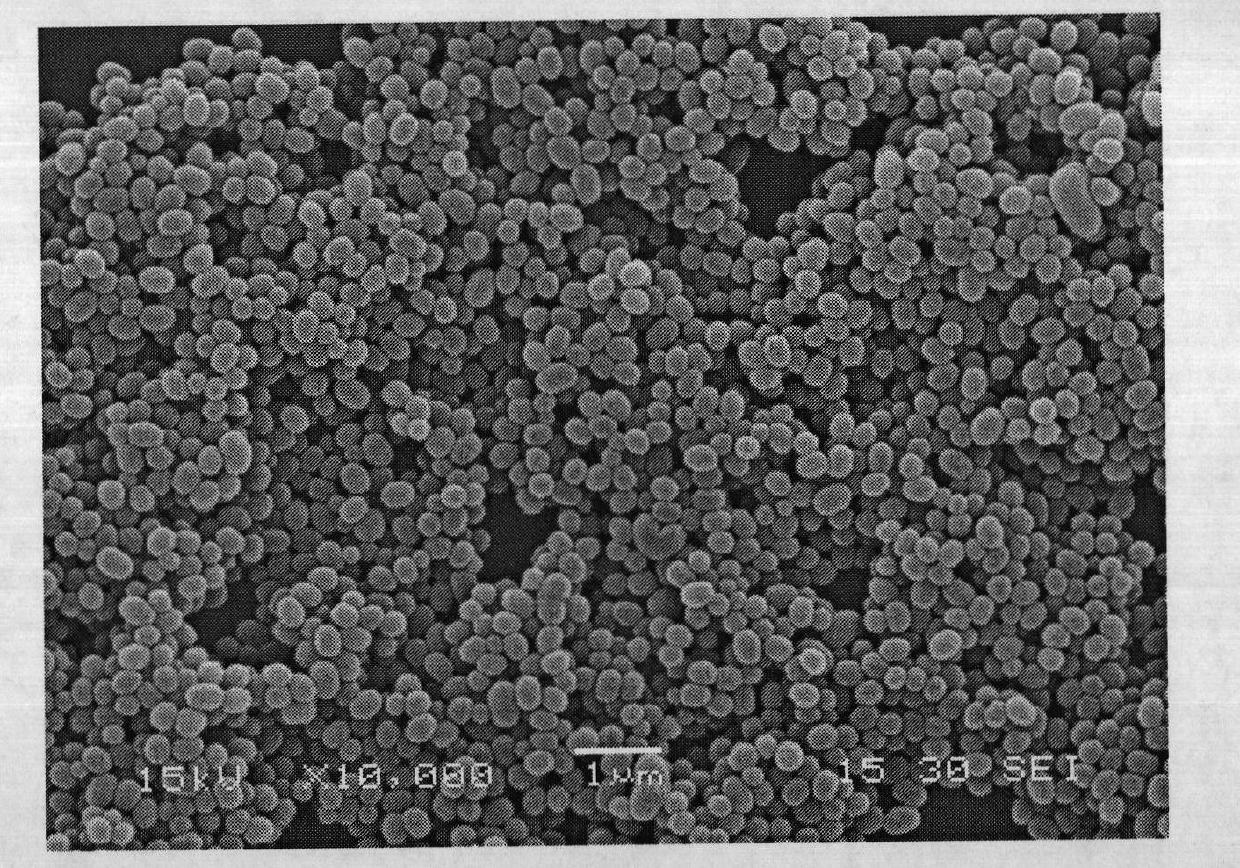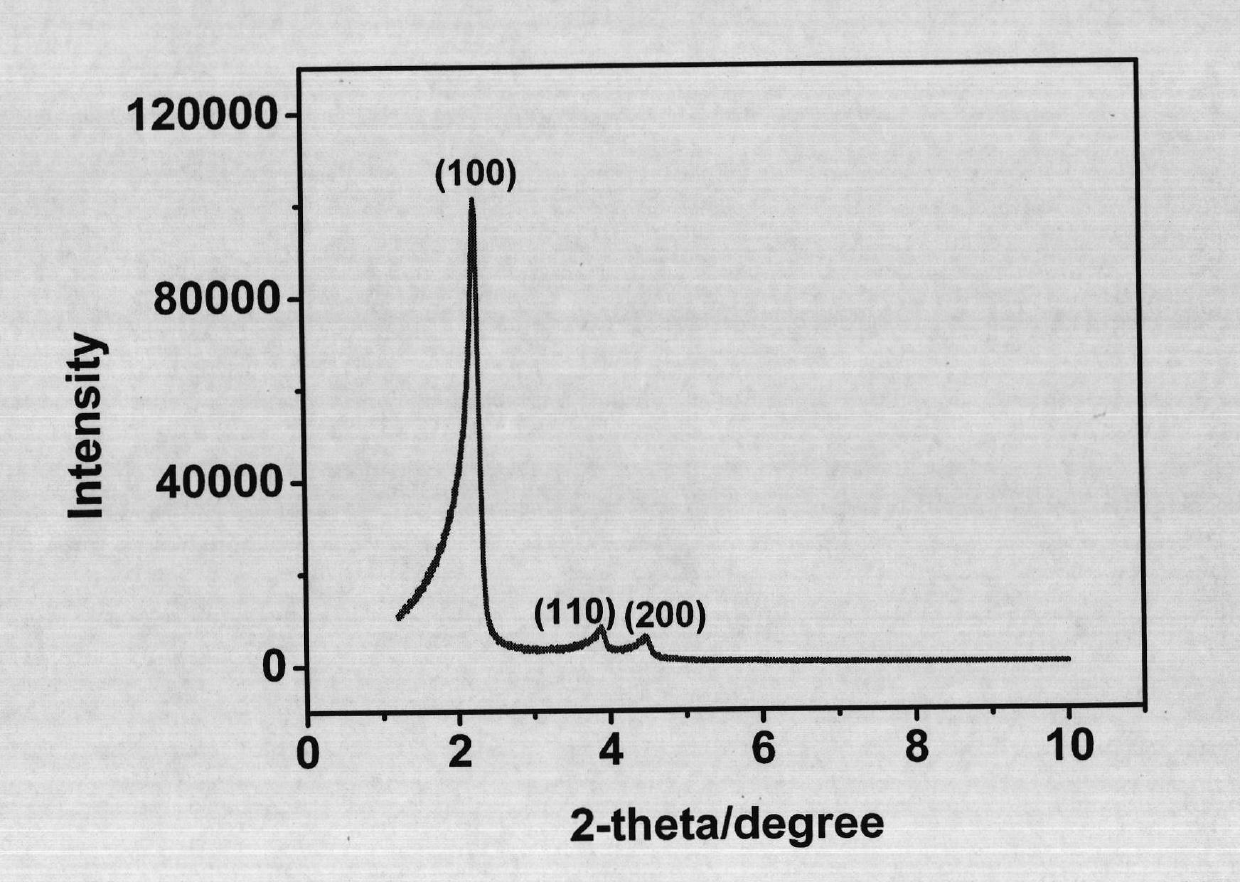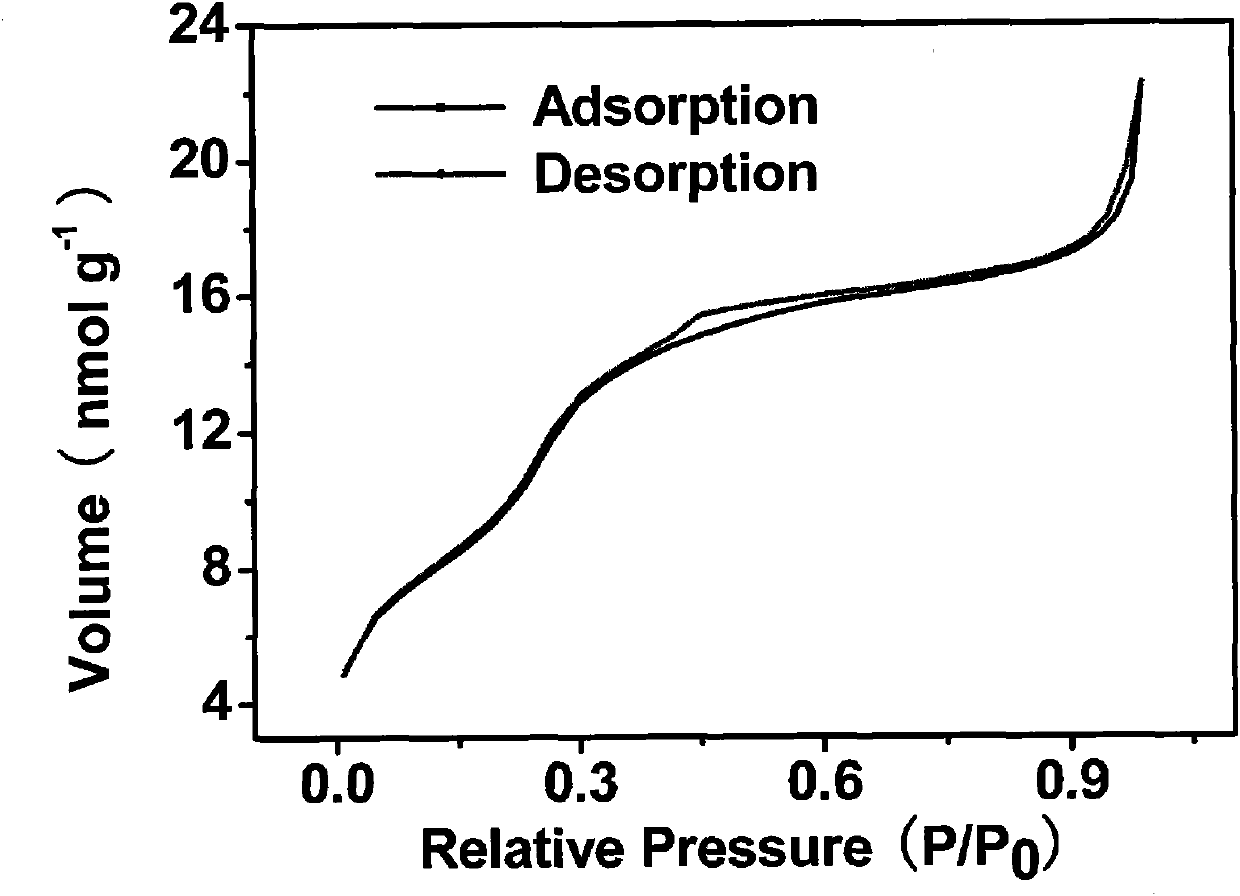Preparation method of mesoporous silica fluorescent nanoparticles for pH ratio probes
A mesoporous silica and fluorescent nanotechnology, applied in the field of advanced nanomaterials and sensors, can solve the problems of easy agglomeration of hydrogels, limited application of in-depth research, and high biological toxicity of quantum dots, and achieve good biocompatibility, Mild reaction conditions and reproducible results
- Summary
- Abstract
- Description
- Claims
- Application Information
AI Technical Summary
Problems solved by technology
Method used
Image
Examples
Embodiment 1
[0036] A method for preparing mesoporous silica fluorescent nanoparticles for pH ratio probes, the method comprising the following steps:
[0037] (1) Weigh 4.7 mg of FITC and add it to a single-necked small flask, add a small magnet, add 1.136 ml of absolute ethanol, then add 50 μl of APTS, seal and protect from light for 12 hours to prepare the FITC-APTS complex;
[0038] (2) Weigh 6.3 mg of RBITC and add it to a single-necked small flask, add a small magnet, add 1.136 ml of absolute ethanol, then add 50 μl of APTS, seal and protect from light for 12 hours, and prepare the RBITC-APTS complex;
[0039](3) Weigh 200mg CTAB, add it into a three-neck flask, add 100ml secondary water, add 0.7ml 2mol / L sodium hydroxide solution, stir for 15min, heat up to 70°C, add 1ml TEOS, 80μl FITC-APTS, 20μl RBITC -APTS, add 1ml of ethyl acetate after 1min, stir for 30s, and let stand for 2h. The sample is cooled, centrifuged at 12000rpm, redispersed into secondary water, and centrifuged, so ...
Embodiment 2~7
[0042] The preparation method was the same as in Example 1, except that the mixing ratio of FITC:RBITC two dyes was different, as shown in Table 1, and mesoporous silica fluorescent nanoparticles were prepared.
[0043] Table 1
[0044]
[0045] When mesoporous silica fluorescent nanoparticles are prepared according to the above examples, the pH detection range and detection sensitivity of the nanoparticles can be adjusted by adjusting the ratio of the two dyes: when the amount of FITC incorporated is large, the nanoparticles It has a better linear detection effect in the acidic range; when the amount of RBITC incorporated is larger, it has a better linear detection effect in the alkaline range; when the ratio of the two is 1:2, it has the widest pH detection range. Simultaneously, along with the increase of FITC amount, the sensitivity of detection improves, and when FITC:RBITC=1:4, its linear slope is 0.41, and promptly the fluorescence ratio of the two changes 0.41 every...
Embodiment 8
[0049] The mesoporous silica fluorescent nanoparticle used for the pH ratio probe proposed by the present invention is a functional nanoparticle doped with binary fluorescence resonance energy transfer (FRET) dye pairs, and its particle size is 200- 1 μm. Due to the introduction of organic fluorescent dye molecules during the preparation process, the nanoparticles can emit fluorescence under visible light excitation; due to the large overlap between the excitation and emission spectra of the two introduced organic fluorescent dye molecules, it can constitute a fluorescence resonance energy The dye pair is transferred, so two kinds of fluorescence emission can be produced under the excitation of a single wavelength; one of the fluorescence emission is sensitive to pH, and the other is stable to pH, and the ratio of the fluorescence intensity of the two changes linearly with the pH value, so the The nanoparticles can be used as pH ratio probes; at the same time, the nanoparticle...
PUM
| Property | Measurement | Unit |
|---|---|---|
| pore size | aaaaa | aaaaa |
| specific surface area | aaaaa | aaaaa |
| particle diameter | aaaaa | aaaaa |
Abstract
Description
Claims
Application Information
 Login to View More
Login to View More - R&D
- Intellectual Property
- Life Sciences
- Materials
- Tech Scout
- Unparalleled Data Quality
- Higher Quality Content
- 60% Fewer Hallucinations
Browse by: Latest US Patents, China's latest patents, Technical Efficacy Thesaurus, Application Domain, Technology Topic, Popular Technical Reports.
© 2025 PatSnap. All rights reserved.Legal|Privacy policy|Modern Slavery Act Transparency Statement|Sitemap|About US| Contact US: help@patsnap.com



